
BOREAS
metrics 2024
Elevating Academic Discourse in Geology and Evolution
Introduction
BOREAS is a prestigious academic journal published by WILEY, dedicated to advancing knowledge across the fields of Archaeology, Ecology, Evolution, Behavior, Systematics, and Geology. With a commendable track record since its inception in 1972, BOREAS has consistently contributed to the scholarly landscape, currently holding a distinguished position in Q1 across multiple categories, including a ranking of #8 in Archaeology and a solid percentile rank in Ecology and Geology. This high-impact journal fosters the dissemination of groundbreaking research, further establishing itself as a vital resource for researchers, professionals, and students alike. While access options are limited to subscription-based, the quality and significance of research published in BOREAS make it an essential addition to any academic library, ensuring that studies conducted in these pivotal fields reach a global audience. With a commitment to excellence and innovation, BOREAS continues to drive forward the frontiers of knowledge and understanding in Earth and planetary sciences.
Metrics 2024
 0.89
0.89 2.40
2.40 2.00
2.00 84
84Metrics History
Rank 2024
Scopus
IF (Web Of Science)
JCI (Web Of Science)
Quartile History
Similar Journals
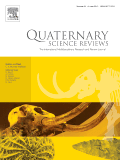
Quaternary Science Reviews
Fostering Innovation in Quaternary ResearchQuaternary Science Reviews is a premier international journal published by PERGAMON-ELSEVIER SCIENCE LTD, dedicated to the multidisciplinary study of the Quaternary period and its implications across a variety of scientific fields, including archaeology, geology, ecology, and environmental science. With an impressive impact factor that places it in the Q1 quartile across multiple categories such as Archaeology, Ecology, and Geology, it stands as a beacon of scholarly excellence. The journal, which has been in circulation since 1982 and converges its knowledge through to 2024, is instrumental for researchers and professionals seeking to explore the complexities of climate change, biodiversity, and earth systems. Though it does not currently offer Open Access options, its well-curated content remains vital for academic advancement and is accessible to a broad audience through institutional subscriptions. Positioned at the forefront of modern scientific inquiry, the journal fosters an environment for sharing pivotal findings and fostering intellectual discussions, making it an indispensable resource for students, practitioners, and researchers alike.

Journal of Asian Earth Sciences-X
Advancing Knowledge in Earth and Planetary SciencesJournal of Asian Earth Sciences-X, a distinguished publication by ELSEVIER, is at the forefront of Earth and planetary sciences, particularly focusing on the dynamic fields of geology and earth-surface processes. As an Open Access journal since 2019, it provides unparalleled access to high-quality research, fostering global collaboration and dissemination of knowledge. With an impressive impact factor and ranking in the Q2 category for both Earth-Surface Processes and Geology, it serves as a crucial platform for researchers, professionals, and students alike to share their findings and insights. Situated in the United Kingdom, the journal thrives on contributions that enhance our understanding of Asian geosciences within a broader global context, aiming to tackle major challenges such as climate change and natural resource management. By bridging regional studies with global perspectives, the Journal of Asian Earth Sciences-X is not only a vital resource for academia but also supports sustainable development initiatives across the region.

Geosciences
Connecting Scholars to the Heart of Geoscience.Geosciences is a prestigious open-access journal published by MDPI, dedicated to advancing research in the field of Earth and Planetary Sciences. Since its inception in 2011, this journal has fostered a collaborative environment for the dissemination of innovative ideas and findings, contributing significantly to the academic community's understanding of complex geological processes. The journal has achieved a commendable 2023 ranking in the second quartile (Q2) within its category, highlighting its impact and relevance in the field, with a Scopus rank of #41 out of 195 journals, placing it in the 79th percentile. With an aim to span a broad range of topics from environmental geology to planetary exploration, Geosciences is pivotal for researchers, professionals, and students looking for an accessible platform to share their work and stay informed of the latest developments. As a fully open-access journal, it ensures that high-quality research is freely available, fostering greater dissemination of knowledge across the globe.

QUATERNARY RESEARCH
Decoding the Quaternary: Where Science Meets History.QUATERNARY RESEARCH, published by Cambridge University Press, is a leading academic journal that focuses on the study of the Quaternary Period, the most recent geological time period. With a strong emphasis on interdisciplinary research, the journal has significantly contributed to our understanding of Earth's dynamic systems and processes, making it an essential resource for researchers and professionals in the fields of Earth and Planetary Sciences, Earth-Surface Processes, and the Arts and Humanities. It is recognized for its high-impact contributions, reflected in its impressive Q1 rankings across multiple categories, including its position as 69th out of 552 in Arts and Humanities and 49th out of 195 in General Earth and Planetary Sciences, showcasing its influence and relevance in the academic community. While QUATERNARY RESEARCH does not provide open access options, it remains a crucial platform for disseminating valuable research findings and fostering scholarly dialogue. The journal's coverage spans from 1970 to 2024, serving as a comprehensive archive of key developments in the field.
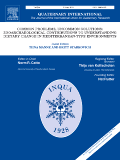
QUATERNARY INTERNATIONAL
Illuminating Climate and Earth-Surface Dynamics.Quaternary International is a prestigious journal published by Pergamon-Elsevier Science Ltd, focusing on the interdisciplinary study of the Quaternary Period, which encompasses significant geological, hydrological, and climatic changes. With an ISSN of 1040-6182 and E-ISSN 1873-4553, it stands as a critical resource in the realm of Earth-Surface Processes, achieving a strong position within the academic community, evidenced by its 2023 Scopus rank of #32 out of 179 in this category, corresponding to an impressive 82nd percentile. Since its inception in 1989, this journal has provided valuable insights and contributed to the advancement of knowledge in the Earth and Planetary Sciences. Researchers, professionals, and students alike will find a wealth of original research articles, reviews, and case studies that inform and inspire further studies in the Quaternary sciences. Although the journal does not currently offer open access options, its reputation for rigorous peer review and impactful content underscores its significance in shaping scholarly discourse in the field.
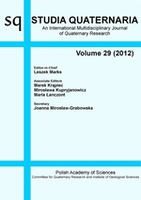
Studia Quaternaria
Pioneering research for a deeper understanding of geology.Studia Quaternaria is a leading academic journal published by the Polish Academy of Sciences, Institute of Geological Sciences, specializing in the dynamic fields of Earth-Surface Processes and Geology. With an ISSN of 1641-5558 and an E-ISSN of 2300-0384, this journal has been a prominent platform for scholarly discourse since its inception in 2000. Operating under the open-access model, it aims to disseminate high-quality research that is accessible to a global audience. Studia Quaternaria holds a Q3 ranking in both relevant quartiles as of 2023, indicating its commitment to advancing knowledge in its disciplines despite centering in competitive academic environments. With its publications indexed in Scopus, the journal remains a valuable resource for researchers, professionals, and students looking to stay abreast of innovations and discoveries in Earth-Surface Processes and Geology. Encompassing a broad scope of studies, the journal represents an essential contribution to the geological sciences, fostering a deeper understanding of our planet's changes and processes.

Paleoceanography and Paleoclimatology
Exploring Earth's Ancient Climate and Ocean DynamicsPaleoceanography and Paleoclimatology, published by the American Geophysical Union, is an esteemed open-access journal dedicated to advancing the fields of atmospheric science, paleontology, and oceanography. With an impressive Q1 ranking in all these categories for 2023, the journal is recognized for its impactful contribution, housing research that explores the intricacies of ancient oceanic and climatic systems from 2018 to 2024. Researchers benefit from its robust Scopus rankings, placing it among the top publications in both paleontology and oceanography, with ranks of #5 and #21, respectively, showcasing its significance in the academic community. The journal provides a vital platform for groundbreaking studies that address critical questions regarding Earth's historical climate and ocean processes, making it an essential resource for researchers, professionals, and students alike.
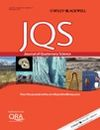
JOURNAL OF QUATERNARY SCIENCE
Decoding the Past to Illuminate the FutureThe JOURNAL OF QUATERNARY SCIENCE, published by Wiley, stands as a premier platform for the dissemination of pivotal research in the fields of Arts and Humanities, Earth and Planetary Sciences, and Paleontology. With its ISSN 0267-8179 and E-ISSN 1099-1417, this esteemed journal has achieved an impressive Q1 ranking across multiple categories in 2023, highlighting its significant impact and relevance within the academic community. With a history extending from 1986 to 2024, it offers a treasure trove of knowledge, presenting cutting-edge studies that advance our understanding of Quaternary science. Although the journal does not operate under an Open Access model, it remains highly regarded, as evidenced by its Scopus rankings positioning it in the top percentiles within its categories. Researchers, professionals, and students alike will benefit from the robust insights and innovative research published in this journal, making it an essential resource for anyone engaged in the study of Quaternary environments and their implications on our planet’s history.
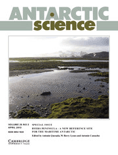
ANTARCTIC SCIENCE
Bridging Disciplines to Decode Antarctica's SecretsANTARCTIC SCIENCE is a premier journal dedicated to the multidisciplinary study of Antarctica, encompassing its ecology, geology, and oceanography. Published by Cambridge University Press, this journal provides a vital platform for researchers, professionals, and students eager to explore the complexities of polar science. With an impressive Scopus ranking placing it in the 70th percentile for geology and 65th for ecology, ANTARCTIC SCIENCE stands out as a Q2 journal in both Ecology, Evolution, Behavior and Systematics and Oceanography categories, reflecting its significant impact in the field. The journal invites submissions that contribute to the understanding of Antarctic environments, wildlife, and climatic changes since its inception in 1986. While not openly accessible, it presents rich accessibility options for institutions and researchers, making cutting-edge research available to its audience. Join the global conversation in advancing polar research and understanding at ANTARCTIC SCIENCE.

Earth Interactions
Illuminating Earth’s Interactions for Tomorrow’s ScholarsEarth Interactions is a prominent journal that serves as a critical platform for interdisciplinary research in the field of Earth and Planetary Sciences. Published by the American Meteorological Society, this journal has established itself as a key resource for scholars, researchers, and professionals dedicated to understanding Earth's complex systems and their interactions. With an impressive Q1 ranking in the category of Earth and Planetary Sciences for 2023, it reflects a commitment to high-quality scholarship and impactful contributions to the field. The journal, with its dedicated coverage from 2004 to 2024, encompasses a wide array of topics, providing comprehensive insights into geological, atmospheric, and environmental phenomena. Although it operates under a non-open access model, its significance is underscored by its placement in the top percentile of Scopus rankings (Rank #89/195), making it an exciting resource for those pursuing advanced studies and applications related to Earth's systems.